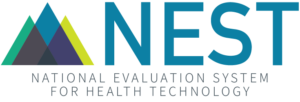Developing the Roadmap for NESTcc Active Surveillance Activities
On January 30, 2019, NESTcc convened the first meeting of its Active Surveillance Task Force. This multi-stakeholder group is tasked with developing a Roadmap for how to establish active surveillance capabilities and tools within the NESTcc Data Network. Not all risks of a device nor their true frequency can be identified in premarket studies. After U.S. Food and Drug Administration (FDA) approval, medical devices are often used in a broader population of patients than were studied prior to marketing. It is therefore important to continuously monitor the safety and effectiveness of devices in real-world settings, identify potential safety signals in near real-time, quickly determine whether the signal represents a true risk, and take appropriate action when it does. The current medical device surveillance system is slowly evolving from a largely passive system, where device users or manufacturers identify and report problems, to a more active approach where we conduct timely software-based analysis of real-world post-market data. This is beneficial for patients as potential safety signals are identified in a much timelier fashion. The goal of the Task Force is to create the vision for medical device active surveillance and determine how to build a practical and attainable active surveillance system that can reside within the NESTcc and its Data Network.
The Task Force is composed of members representing patients, clinicians, health systems, FDA, public and private payers, and the medical device industry, and is committed to building the future of active surveillance to detect emerging safety signals. The outcome of the Task Force’s collaboration will be to create a Roadmap that will highlight steps that can be taken in the short-term and how NESTcc’s active surveillance work can evolve in the long-term. Additional information on the establishment and charge of the Active Surveillance Task Force can be found here.
The Task Force noted that an important step in developing and executing on this Roadmap is to focus on the front-end user experience and delineate the processes necessary on the back-end to achieve real-time active surveillance using real-world evidence under NESTcc. We are starting with trying to understand who the different users will be (e.g. regulators, industry groups, patients, clinicians) and how NESTcc can address their different needs. However, the Task Force is also conscious of the fact that an active surveillance system will need to work equitably for all users of the NESTcc Data Network and should have a focus on where active surveillance is headed in the future, not just its capabilities today. This will be a main focus of the Task Force moving forward.
More specifically, a key point of emphasis is building the infrastructure to develop medical device surveillance activities for signal detection and signal discernment. Signal detection refers to identifying events not seen during premarket studies while signal discernment relates to determining whether a potential signal is real or not. This was outlined as a priority by FDA Commissioner Scott Gottlieb, M.D. and Jeffrey Shuren, M.D., J.D., Director of the Center for Devices and Radiological Health (CDRH) in the FDA’s 2018 Medical Device Safety Action Plan and subsequent statement on implementation, which can be found here.
The creation of an initial draft of the active surveillance Roadmap is currently underway, and by November 2019, the Active Surveillance Task Force will aim to have a progress statement prepared for public release. NESTcc’s Active Surveillance Task Force will continue its work to ensure that these tools and processes are finely tuned to take full advantage of the medical device active surveillance landscape. I look forward to the opportunity to help facilitate this effort, improve the capabilities of the NESTcc Data Network, and grow the impact of active surveillance on the medical device ecosystem to better serve the American public.
